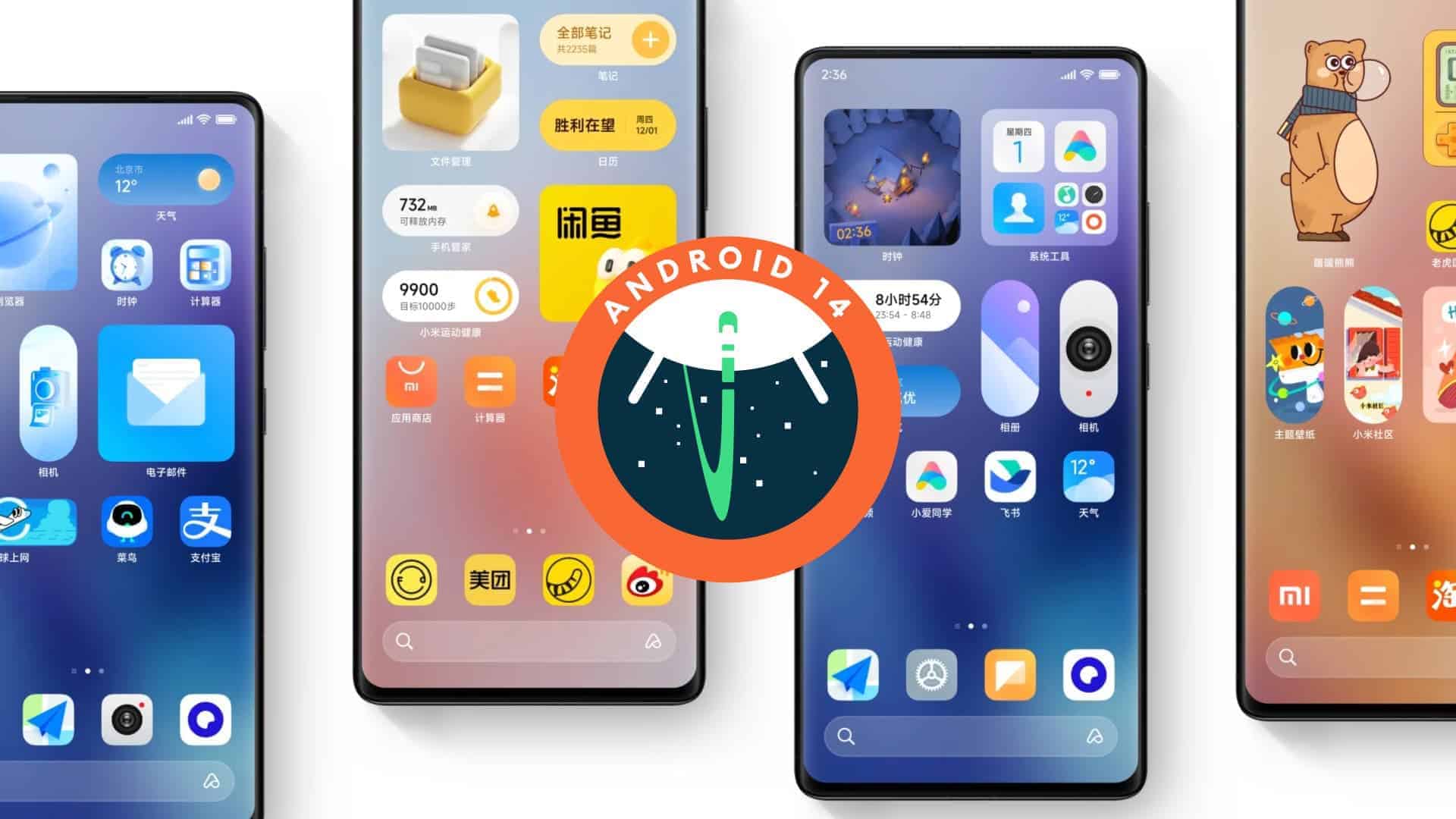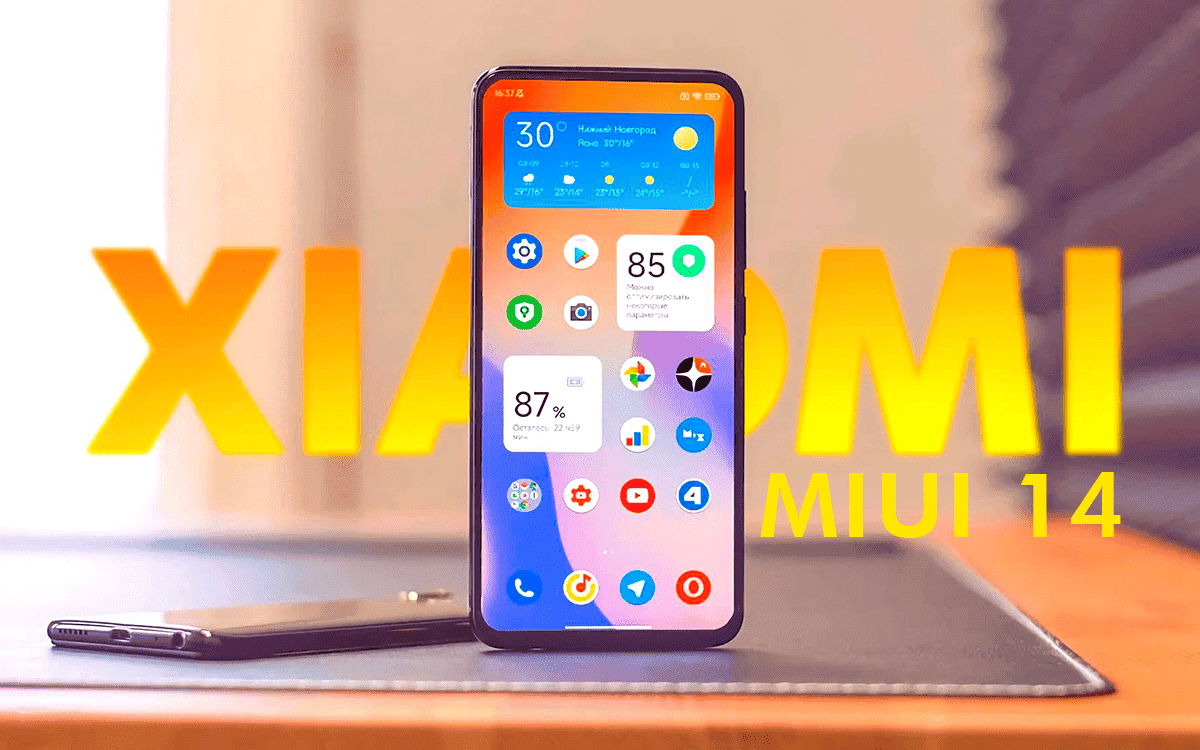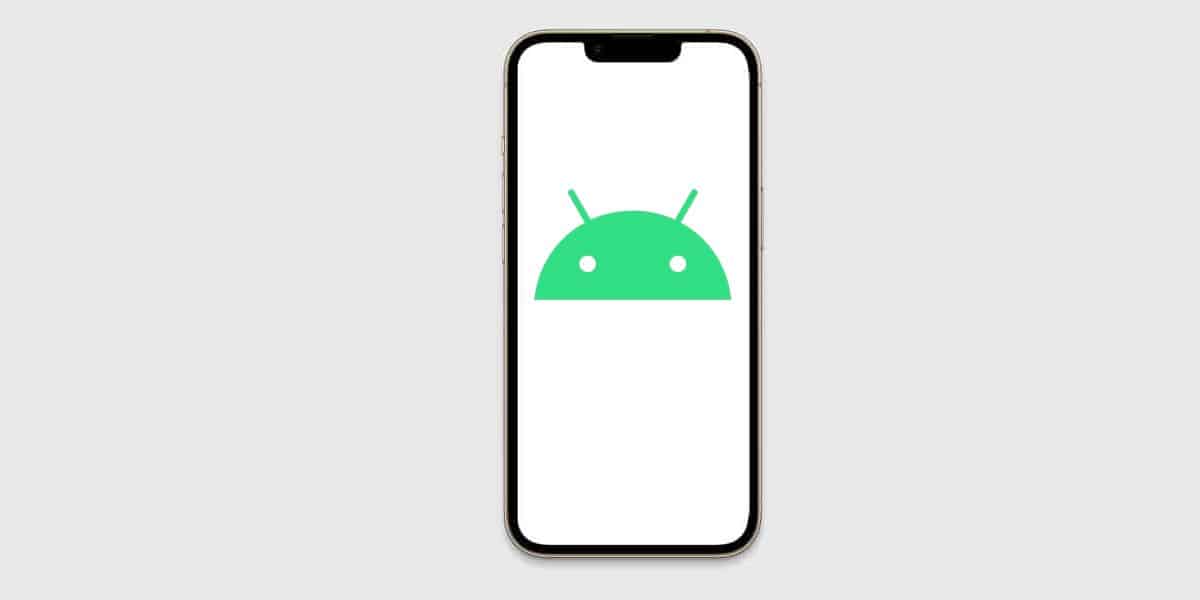Xiaomi has just announced the Xiaomi 13T and Xiaomi 13T Pro, its latest alternative high-end mobiles. The big star of this generation is the collaboration with Leica, but from the software side we also have news: they will receive up to five years of updates.
Xiaomi 13T and 13T Pro: Everything You Need to Know About the Software Updates

This is a significant increase from the three years of Android updates that Xiaomi has been offering on its flagship phones in recent years. It is also on par with the four years of updates that Samsung has been offering on its high-end phones since 2020.
The Xiaomi 13T and 13T Pro will ship with Android 13 and MIUI 14. This means that they are guaranteed to receive updates to Android 14, 15, 16, and 17. They will also receive security updates for five years, until September 2028.
This is a major commitment from Xiaomi to its customers, and it is a clear sign that the company is serious about providing long-term support for its flagship phones. It is also a sign that Xiaomi is taking the software side of things more seriously, and that it is committed to providing its users with a good user experience for as long as possible.
Xiaomi’s Commitment to Long-Term Software Support
One of the most significant aspects that set the Xiaomi 13T and Xiaomi 13T Pro apart from their competitors is their unparalleled commitment to software support. These smartphones come equipped with MIUI 14, based on the latest Android 13. Xiaomi has pledged to provide these devices with four major Android updates, aligning them with the likes of Samsung, a company renowned for its steadfast approach to software longevity.
This means that if you decide to invest in a Xiaomi 13T or 13T Pro, you’re not just buying a smartphone for today but also securing its relevance well into the future. Let’s break down what these updates entail:
- Android 14: With these phones debuting on Android 13, you can expect an upgrade to Android 14, ushering in new features and improvements.
- Android 15: Xiaomi doesn’t stop at Android 14; they’re committed to keeping your device up-to-date, ensuring it receives all the latest Android innovations.
- Android 16: As we move into 2026, Xiaomi will roll out Android 16 to your device, keeping it in line with the rapidly evolving smartphone landscape.
- Android 17: By 2027, when the world is exploring Android 17, you won’t be left behind, as Xiaomi continues to push updates to your smartphone.
This approach significantly extends the life of your device, ensuring it remains current and capable of running the latest apps and services.
Security Beyond 2028
Xiaomi doesn’t stop at just the core Android updates. They understand the importance of keeping your device secure. That’s why they have guaranteed five years of security updates for the Xiaomi 13T and 13T Pro. This means that until September 2028, your phone will receive essential security patches, keeping it safe from potential vulnerabilities.
Here’s a quick overview of what to expect from these smartphones:
XIAOMI 13T
- Release Date: September 2023
- Security Updates Until: September 2028
- Shipped with: Android 13
- Updates Supported Up To: Android 17
This commitment to both core software and security updates is a monumental step forward for Xiaomi, especially in the global market. Until now, Xiaomi had only ventured into the four-year update territory with the Redmi K60 Extreme, exclusively in China. However, with the Xiaomi 13T series, they’ve extended this support to a global audience.

Why are software updates important?
Software updates are important for a number of reasons. First, they keep your phone up-to-date with the latest security patches. This is essential for protecting your phone from malware and other cyber threats.
Second, software updates often include new features and improvements. For example, the Android 13 update includes a number of new features, such as a new notification system, a new privacy dashboard, and new battery-saving features.
Third, software updates can help to improve your phone’s performance. For example, Xiaomi has said that the MIUI 14 update will include a number of performance optimizations.
How to get software updates on your Xiaomi 13T or 13T Pro
To get software updates on your Xiaomi 13T or 13T Pro, simply go to the Settings app and tap on “System updates.” Then, tap on “Check for updates.” If an update is available, you will be able to download and install it.
You can also set your phone to automatically download and install updates. To do this, go to the Settings app and tap on “System updates.” Then, tap on the three dots in the top right corner of the screen and select “Auto-download updates.”
Verdict
The Xiaomi 13T and 13T Pro will receive four years of Android updates and five years of security updates. This is a significant increase from the three years of Android updates that Xiaomi has been offering on its flagship phones in recent years. It is also on par with the four years of updates that Samsung has been offering on its high-end phones since 2020.
This is a major commitment from Xiaomi to its customers, and it is a clear sign that the company is serious about providing long-term support for its flagship phones. It is also a sign that Xiaomi is taking the software side of things more seriously, and that it is committed to providing its users with a good user experience for as long as possible.
Here are some additional thoughts on the Xiaomi 13T and 13T Pro software updates:
- The four years of Android updates is a good start, but I would like to see Xiaomi commit to five years of updates on all of its flagship phones. This would bring them on par with Google, which offers five years of software support for its Pixel phones.
- I am also glad to see that Xiaomi is offering five years of security updates. This is important for keeping your phone safe from malware and other cyber threats.
- I hope that Xiaomi is able to roll out software updates to the Xiaomi 13T and 13T Pro in a timely manner. In the past, Xiaomi has been criticized for being slow to roll out software updates to its phones.
- I would also like to see Xiaomi offer more transparency about its software update policy. It would be nice to know how long Xiaomi plans to support its phones with software updates, and what factors it considers when making those decisions.
Overall, I am pleased with the Xiaomi 13T and 13T Pro software updates. Xiaomi is on the right track, but there is still room for improvement.

Android Fragmentation: A Problem of the Past?
Android fragmentation is the problem of having a wide variety of different versions of the Android operating system in use on different devices. This can cause compatibility issues for developers, and it can also make it difficult for users to receive updates in a timely manner.
There are a number of factors that contribute to Android fragmentation. One factor is the sheer number of different Android devices on the market. There are thousands of different Android devices available from a wide variety of manufacturers. Each manufacturer has its own unique approach to software development, and this can lead to different versions of Android being used on different devices.
Another factor that contributes to Android fragmentation is the fact that Android is an open source operating system. This means that anyone can modify and distribute Android. This is a good thing because it allows for a lot of innovation, but it also means that there are many different versions of Android in use.
Android fragmentation has been a problem for many years. However, in recent years, Google and Android smartphone manufacturers have been taking steps to address the problem.
Google’s Efforts to Reduce Android Fragmentation
Google has taken a number of steps to reduce Android fragmentation. One step is to release new versions of Android on a regular basis. Google typically releases a new version of Android every year. This helps to ensure that most Android devices are running on a relatively recent version of the operating system.
Another step that Google has taken is to make it easier for manufacturers to update their devices to the latest version of Android. Google has developed a number of tools and resources to help manufacturers with the software update process.
Google has also been working with manufacturers to encourage them to release updates to their devices for a longer period of time. In the past, many manufacturers would only release updates to their devices for a few years. However, Google is now encouraging manufacturers to release updates to their devices for at least three years.
Android Smartphone Manufacturers’ Efforts to Reduce Android Fragmentation
Android smartphone manufacturers have also been taking steps to reduce Android fragmentation. One step that manufacturers are taking is to release updates to their devices for a longer period of time. In the past, many manufacturers would only release updates to their devices for a few years. However, manufacturers are now releasing updates to their devices for at least three years, and some manufacturers are even releasing updates for four years or more.
Another step that manufacturers are taking is to make it easier for users to update their devices. Many manufacturers now offer over-the-air (OTA) updates. OTA updates allow users to download and install updates to their devices without having to connect their devices to a computer.
The Future of Android Fragmentation
Android fragmentation is still a problem, but it is becoming less of a problem every year. Google and Android smartphone manufacturers are taking steps to address the problem, and this is having a positive impact.
In the future, I believe that Android fragmentation will continue to decline. This is due to a number of factors, including the following:
- Google’s continued efforts to reduce Android fragmentation
- Android smartphone manufacturers’ continued efforts to reduce Android fragmentation
- The growing popularity of flagship Android devices. Flagship Android devices are typically more expensive than other Android devices, but they also receive software updates for a longer period of time.
- The increasing importance of security updates. Security updates are important for keeping your device safe from malware and other cyber threats. Android smartphone manufacturers are now releasing security updates to their devices for a longer period of time.
Android fragmentation is a problem of the past. Google and Android smartphone manufacturers are taking steps to address the problem, and this is having a positive impact. In the future, I believe that Android fragmentation will continue to decline.

Here are some additional thoughts on the future of Android fragmentation:
- I believe that Google will continue to play a leading role in reducing Android fragmentation. Google has the resources and the influence to make a real difference.
- I also believe that Android smartphone manufacturers will continue to play a role in reducing Android fragmentation. Manufacturers are now more aware of the importance of software updates, and they are more willing to release updates to their devices for a longer period of time.
- I am also optimistic about the future of flagship Android devices. Flagship Android devices are typically more expensive than other Android devices, but they also receive software updates for a longer period of time. As flagship Android devices become more popular, Android fragmentation will continue to decline.
- Finally, I believe that the increasing importance of security updates will also help to reduce Android fragmentation. Security updates are important for keeping your device safe from malware and other cyber threats. Android smartphone manufacturers are now releasing security updates to their devices for a longer period of time. This will help to ensure that most Android devices are running on a recent version of the operating system.
How Google and Android Smartphone Manufacturers Are Enhancing Their Software Support and Extending It to Longer Periods
Google and Android smartphone manufacturers are enhancing their software support and extending it to longer periods in a number of ways. Here are some examples:
- Google is releasing new versions of Android on a regular basis and making it easier for manufacturers to update their devices to the latest version of Android. Google typically releases a new version of Android every year. This helps to ensure that most Android devices are running on a relatively recent version of the operating system. Google has also developed a number of tools and resources to help manufacturers with the software update process.
- Android smartphone manufacturers are releasing updates to their devices for a longer period of time. Many manufacturers are now releasing updates to their devices for at least three years, and some manufacturers are even releasing updates for four years or more. This is a significant increase from the past, when many manufacturers would only release updates to their devices for a few years.
- Android smartphone manufacturers are making it easier for users to update their devices. Many manufacturers now offer over-the-air (OTA) updates. OTA updates allow users to download and install updates to their devices without having to connect their devices to a computer.
- Google is working with manufacturers to ensure that all new Android devices support Project Treble. Project Treble is a modular architecture that makes it easier for manufacturers to update their devices to the latest version of Android.

The Benefits of Enhancing Software Support and Extending It to Longer Periods
There are a number of benefits to enhancing software support and extending it to longer periods. These benefits include:
- Improved security. Security updates are important for keeping your device safe from malware and other cyber threats. When manufacturers release updates to their devices for a longer period of time, it helps to ensure that most Android devices are running on a recent version of the operating system and that they are protected from the latest security threats.
- Improved performance and stability. Software updates often include performance and stability improvements. When manufacturers release updates to their devices for a longer period of time, it helps to ensure that Android devices continue to run well over time.
- New features and functionality. Software updates often include new features and functionality. When manufacturers release updates to their devices for a longer period of time, it gives users access to the latest features and functionality for a longer period of time.
- Reduced environmental impact. When people keep their Android devices for longer, it helps to reduce the environmental impact of the smartphone industry.
Google and Android smartphone manufacturers are enhancing their software support and extending it to longer periods. This is a positive development that will benefit users and the environment.
Here are some additional thoughts on the benefits of enhancing software support and extending it to longer periods
- Improved user experience. When users have access to the latest security updates, performance and stability improvements, and new features and functionality, it leads to an improved user experience.
- Reduced support costs for manufacturers. When manufacturers release updates to their devices for a longer period of time, it reduces their support costs. This is because users are less likely to contact support for problems that can be solved by a software update.
- Increased customer satisfaction. When users know that their devices will receive updates for a longer period of time, it increases their satisfaction with their devices. This is because they know that their devices will continue to be secure and that they will have access to the latest features and functionality.
Overall, enhancing software support and extending it to longer periods is a win-win for everyone involved. It benefits users, manufacturers, and the environment.




